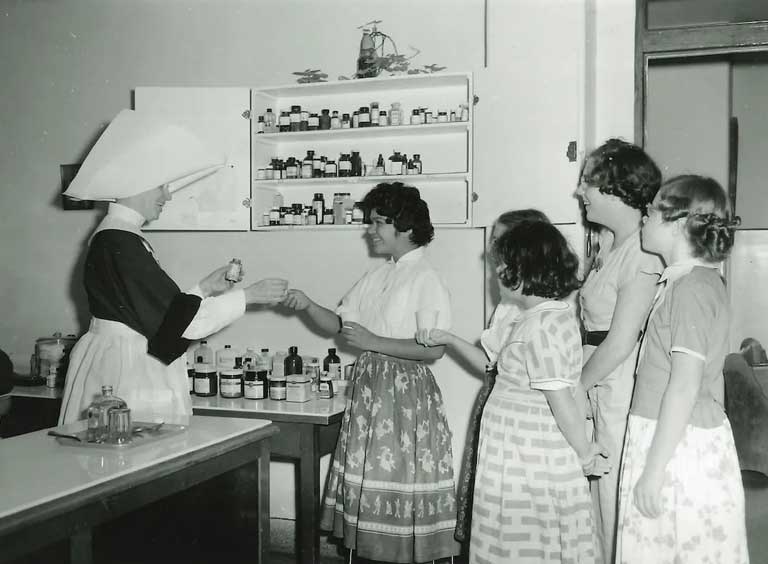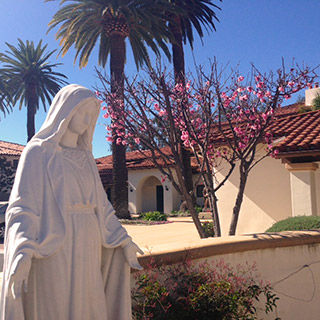
A Little Infirmary on the Prairie: Santa Barbara’s First Medical Facility
Santa Barbara, CA | The Santa Barbara Independent | September 7th, 2023
In the latter half of the 19th century Santa Barbara became a mecca for people suffering from chronic respiratory illnesses. The publication of books, such as Charles Nordhoff’s California: For Health, Pleasure, and Residence in 1873, played an important role in popularizing Santa Barbara as the ultimate destination for healing and natural palliation in the American imagination. The rumors of the region’s rejuvenating climate converged with technological advances of the time. The completion of Stearns Wharf in 1872 and the building of a railroad connection in 1877 opened Santa Barbara to settlement, tourism, and commerce on a much bigger scale. Lured by the promises of salubrious weather and inspired by the hearsay accounts of extraordinary recoveries from “consumption and the diseases of the throat and lungs,” thousands settled in the Santa Barbara area.
The city, however, was remarkably unprepared to provide medical care to a growing population of chronically ill people. It turned out that sunshine and fresh air alone could not cure serious illnesses; Santa Barbara needed proper medical facilities. The absence of hospitals in the city was particularly painful for the folks living in poverty. This sentiment was expressed emphatically on the pages of Santa Barbara Weekly Press in 1874. An op-ed titled “An Infirmary” stated, “We want some place to bestow our indigent sick; people who are here without money enough to pay the expense of living, or strength enough to work for it. People who are ‘broke’ in pocket and constitution, cannot of course be accommodated at the hotels and boarding houses, running over with paying customers.”
Recognizing the urgent need for a medical facility in Santa Barbara, the Daughters of Charity, who had operated a school and orphanage in the city since 1858, made a decision to open a small infirmary in 1877. The infirmary was located on West Carrillo Street, near the site of St. Vincent’s orphanage. The infirmary was a modest but earnest endeavor. It offered the city’s residents a place of compassionate care, attentive rehabilitation, and healing. Since its opening, the infirmary provided essential inpatient care to chronically ill people and the moderate terms of the infirmary’s treatment allowed the poor to access medical help.
The local press welcomed the news of the infirmary’s opening. The 1877 Santa Barbara Weekly Press article titled “Home for Invalids” celebrated the inauguration of the medical facility, crediting the Catholic nuns for their contribution to the city’s fledgling public health infrastructure: “The Sisters of Charity have rented a house on Carrillo Street which they intend to convert into a home for invalids who visit Santa Barbara and require the care and attention of nurses.” Highlighting the importance of the infirmary to the people of Santa Barbara, the article did not fail to mention that the daughters were the first to answer the call to open an inpatient medical facility in the city: “An infirmary has been talked about in Santa Barbara at several different times, but until present nothing has been done.”
The small infirmary had a big impact on the local community. This becomes evident from the extant firsthand accounts of people who benefited from the care that they received at the infirmary.
Such was the story of Mary A. Bliss, whose testimony was preserved on the pages of the 1914 issue of the Santa Barbara Daily Press newspaper. Bliss recalled the story of her family’s arrival in Santa Barbara in 1876. “Like most of the earlier residents,” Bliss was recorded saying, “her family brought an invalid (a chronically ill person) to Santa Barbara” with the expectation that the region’s climate would do wonders for their recovery. However, after settling at a ranch just outside of the city, the physician who treated the patient insisted that they should move into the town to benefit from the currents of fresh air coming from the ocean. This is when the Bliss family discovered “that there was no hospital in Santa Barbara.” Fortunately, the Daughters of Charity had already been operating their infirmary where the Bliss family found “a comfortable home” for their ill relative.
In 1891, Santa Barbara Cottage Hospital welcomed its first patients in a 25-bed facility. The construction of the hospital signified a major milestone in the history of Santa Barbara’s public health services. Cottage Hospital continued to grow in both the breadth of its services and national renown. All the while, the daughters’ small infirmary continued to admit new patients and serve people of all incomes well into the early 20th century. Notably, the infirmary provided additional beds during the outbreak of the notorious global influenza pandemic of 1918 in Santa Barbara. In 1924, St. Vincent’s orphanage moved from its historic location on De La Vina Street to a new and much bigger building on what was then Hollister Avenue. With this move, the Daughters of Charity brought the history of Santa Barbara’s first infirmary to a gentle end.

